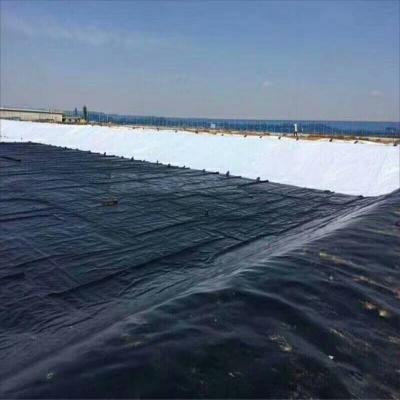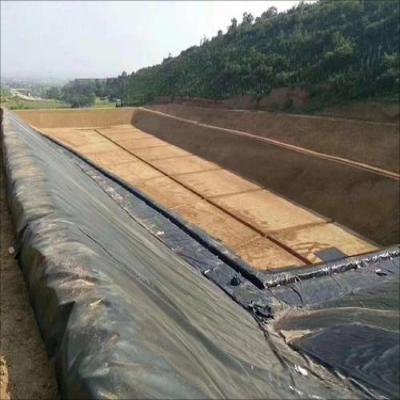In the field of environmental protection engineering, geomembrane, as an important anti-seepage material, plays a vital role. With the continuous advancement of technology and the improvement of environmental awareness, UV-resistant geomembrane came into being, and its unique performance makes it widely used in garbage mulching.
Geomembrane has the functions of waterproofing, isolation, puncture resistance and moisture isolation, and is widely used in workshops, warehouses, basements, roof planting, reservoirs and other places.
First, we need to understand the basic properties of UV resistant geomembranes. UV-resistant geomembrane is a geomembrane material with excellent UV resistance. It can effectively resist ultraviolet radiation and prevent material aging, embrittlement and breakage. This material not only has excellent anti-seepage performance, but also has good physical and mechanical properties and chemical stability, and can adapt to various harsh environmental conditions.
In garbage mulching, the application of UV-resistant geomembranes is of great significance. First of all, it can effectively prevent harmful substances and leachate in garbage from penetrating into soil and water bodies, thus protecting the safety of soil and water quality. Secondly, UV-resistant geomembrane can reduce the environmental pollution caused by garbage and reduce the risk of secondary pollution during garbage disposal. In addition, it is able to improve the stability and durability of the garbage cover and extend the service life of the garbage treatment facility.
In practical application, the construction method of anti-ultraviolet geomembrane is relatively simple. First of all, it is necessary to clean and level the garbage covered area to ensure that there are no sharp objects, stones and other substances on the surface that may damage the geomembrane. Then, the UV-resistant geomembrane is laid on the garbage cover layer to ensure that the membrane surface is smooth and wrinkle-free, and a certain margin is left for subsequent connection and fixation. During the laying process, attention should be paid to avoid excessive stretching and shearing of the geomembrane, so as not to affect its anti-seepage performance.
In terms of connection and fixation, UV-resistant geomembranes are usually spliced by hot melt welding or special adhesive tape connection to ensure the tightness and firmness of the joints. At the same time, it is necessary to fix the periphery and key parts of the membrane to prevent the membrane material from being displaced or damaged under the action of wind or other external forces.
In addition to the considerations during construction, the long-term maintenance of UV-resistant geomembranes in trash mulching is also critical. Regular inspection and maintenance of geomembranes and timely discovery and treatment of possible damage or aging problems are the keys to ensure the long-term effective operation of geomembranes.
In addition, with the continuous development of science and technology, the performance of UV-resistant geomembranes is also constantly improving. The new UV-resistant geomembrane material not only has higher UV resistance and durability, but also has better environmental performance and lower cost. The research and development and application of these new materials will further promote the application and development of UV-resistant geomembranes in garbage covering.
To sum up, the application of UV-resistant geomembranes in garbage mulching is of great significance. It can not only effectively prevent garbage from polluting the environment, but also improve the stability and durability of garbage treatment facilities. With the continuous progress of technology and the research and development and application of new materials, the application prospect of UV-resistant geomembranes in garbage covering will be broader. We expect more environmental protection projects in the future to use this efficient and environmentally friendly geomembrane material to make greater contributions to protecting the environment and achieving sustainable development.
Post time: Jan-07-2025





